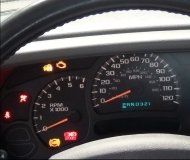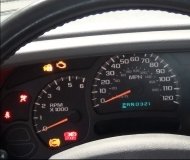Rats. Low idle speed after a battery is replaced, or the car has been sitting a long time is extremely common on the older models, but I see yours has "throttle-by-wire" which isn't affected by this. On the older models, the Engine Computer has to see a very specific set of conditions to know when your foot is off the accelerator pedal, then it takes the voltage reading from the throttle position sensor and puts that in memory. From then on, anytime it sees that same voltage, it knows it has to be in control of idle speed. Those conditions are very easily met by coasting from highway speed.
What you're describing is different. The first thing is I need to know the exact diagnostic fault code number(s). That will give us a starting point. Until we know that, the symptoms suggest a problem with the MAP sensor. That one has the biggest say in fuel metering calculations. Faut codes never say to replace a part or that one is defective, so if the code only refers to running too rich or lean, you're going to need a scanner to view live engine data. In particular, I'm interested in the MAP sensor voltage with the ignition switch in "run" but the engine isn't running, then again when the engine is running. Typically it should be roughly 4.0 - 4.2 volts, (engine off), then drop to around 2.0 volts with it running.
In the late '80s to early '90s, the original MAP sensor design caused a lot of failures with exactly the same symptoms you're describing. Many vehicles came in on tow trucks, and I surprised a lot of owners after I figured out a trick that allowed me to drive their cars into the shop. The trick was the accelerator pedal had to be moving. Didn't matter which way or how fast. As soon as it was held steady, the engine would stall. Remember, this was on older models with the normal throttle cable, but you might try it anyway to see if the engine will stay running.
Another thing to try is unplugging the MAP sensor. The Engine Computer will see that and most likely set another fault code, but when the computer sees that, it will "inject" an approximate value to run on based on the readings from other sensors and other engine operating conditions. That is a strategy built in to allow the computer to run the engine well enough to get you to a shop, but it usually won't run perfectly.
When the engine does run, observe if it's smooth or if there's a noticeable misfire. If there's a spark-related misfire, that will send unburned fuel and air into the exhaust system. The front oxygen sensors will detect the unburned oxygen and report it as a "lean" condition, but you'll smell the unburned fuel at the tail pipe as a rich condition. The computer will keep adding fuel in an attempt to overcome the lean condition, but no matter how much fuel it adds, the oxygen sensors will keep seeing a lean condition. They only measure unburned oxygen, not fuel.
Let me know how far this gets you, and that fault code number when you have it.
Friday, August 2nd, 2024 AT 9:06 PM



